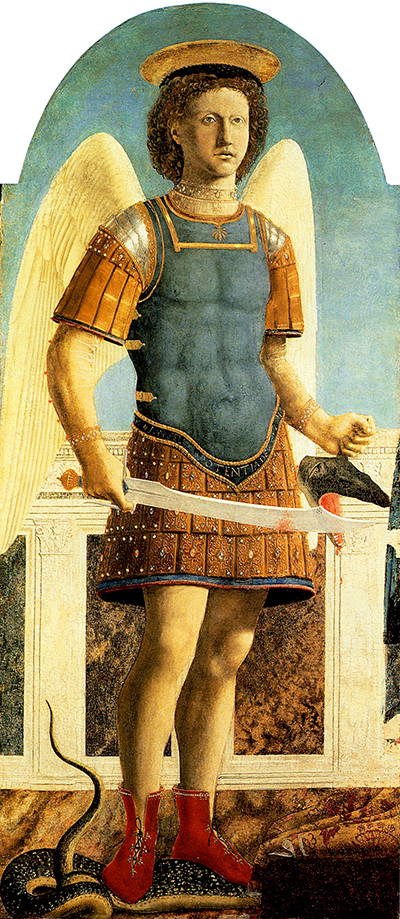Drawing was a crucial element to the success of Piero della Francesca as an artist, even though no original sketchwork from his career still remains today. Research in recent decades has helped us to learn more about his working practices and, in particular, his tendency to re-work compositions time and time again.
Whilst no drawing artworks remain, there are still plenty of examples of his work in this medium through various manuscripts that did survive to the present day. Della Francesca was a highly thoughtful individual and would constantly be reading and making notes on a variety of topics across the field of art and science. Some of his sketches would be for purely artistic enjoyment whilst many others would be testing his knowledge of technical items such as perspective. His own paintings also have examples of his underdrawings that can be found through scientific study. It is perhaps about time that an extensive collection of his sketchwork was compiled, though at least a recent lecture on this topic was carried out in London, 2015.
Professor Emeritus James R. Banker from North Caroline State University led an evening's lecture titled, "Piero della Francesca: A Life of Design and Proportion". He was supported by a number of other speakers from Europe and North America. Many of those involved had written extensively about the artist's career before but there had seldom been a specific focus on his drawings alone. This debate was long overdue. It took place at The National Gallery, an institution with a strong connection to the Italian Renaissance, as well as possessing some of the artist's original paintings.
The V&A claim to have ownership of a rare drawing by the artist, however. The artwork features Lucretia, sat by the side of her bed, preparing to stab herself. It is believed to have been bequeathed to the collection by Rev Alexander Dyce in 1874 as part of a larger generous donation. The materials used was termed distemper, with touches of white heightening added in order to add depth to the piece. Whilst they have declared this to be a drawing, distemper is actually a form of paint, a cheaper alternative to oils or frescoes. Thus, it is debatable whether this particular artwork can actually be classified as a drawing, as such.
Piero della Francesca was particularly interested in geometry and paper drawings are well suited to this discipline. You will find some of his notes that provide a very precise examination of facial structure, against a light grid that he also added himself. In comparison to Da Vinci, another skilled draughtsman, Francesca did not go into as much detail with regards shading. He would precisely analyse the human body in the same way that others would construct architectural drawings, where we can understand precisely the sizing and placement of each and every component within the overall construction. Essentially, he treated every limb, facial feature and torso to be separate elements that he examined in detail one after another, before then putting them all together.
There are many drawings remaining from the Renaissance that have been compared to paintings by Piero della Francesca in order to try to match them to his career. There are a number of examples which appear to match the test of likeness and quality, but it would be hard to positively identify any of these loose drawings directly to his hand all these years later. The lack of documentation around this medium, particularly during that period, means that many remain described as "after x" or "from the school of y" and it would be hard to make it anymore specific now.




